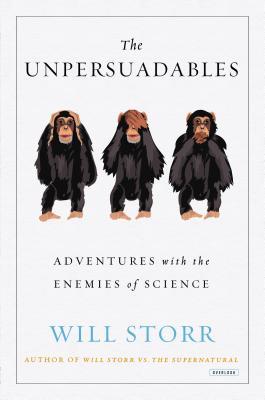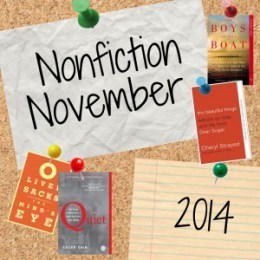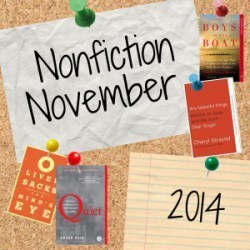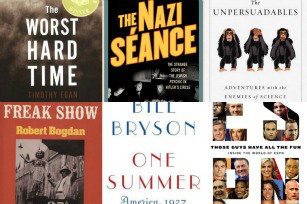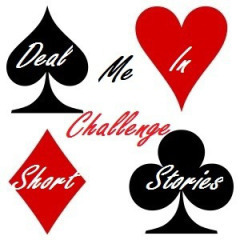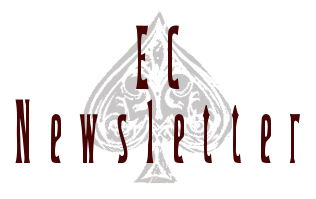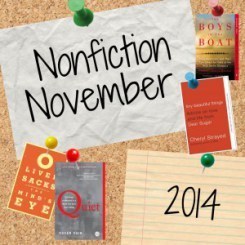Katherine Nabity's Blog, page 199
November 28, 2014
Review ~ The Unpersuadables
While excavating fossils in the tropics of Australia with a celebrity creationist, Will Storr asked himself a simple question. Why don’t facts work? Why, that is, did the obviously intelligent man beside him sincerely believe in Adam and Eve, the Garden of Eden and a six-thousand-year-old Earth, in spite of the evidence against them?
It was the start of a journey that would lead Storr all over the world—from Texas to Warsaw to the Outer Hebrides—meeting an extraordinary cast of modern heretics whom he tries his best to understand. Storr tours Holocaust sites with famed denier David Irving and a band of neo-Nazis, experiences his own murder during “past life regression” hypnosis, discusses the looming One World Government an iconic climate skeptic, and investigates the tragic life and death of a woman who believed her parents were high priests in a baby-eating cult.
Using a unique mix of highly personal memoir, investigative journalism, and the latest research from neuroscience and experimental psychology, Storr reveals how the stories we tell ourselves about the world invisibly shape our beliefs, and how the neurological “hero maker” inside us all can so easily lead to self-deception, toxic partisanship and science denial. (via Goodreads)
With the subtitle Adventures with the Enemies of Science, I expected something a little different from The Unpersuadables. Something harder and something more neutral. Or, maybe with my own biases, something more skeptical, even though I had been warned.
Will Storr is a seeker. The Unpersuadables is his record of trying to reconcile his nagging feeling of wrongness amid his skepticism. While investigating the followers of some more eccentric beliefs, Storr feels some measure of kinship. He finds it difficult to judge them when he himself has done pretty irrational things. What can be learned from Holocaust deniers, sufferer of Morgellons syndrome, and even the King of Skeptics?
Well, Storr learns that the human brain is incredibly fallible. Even on a basic level, the world we sense is somewhat inferred by the information we already have. On a higher level, we have all developed models of how we believe the world to work and are loath to deviate from them. Our memories are incredibly malleable, which is unfortunate since we rely on the stories we tell ourselves for our sense of being. Storr’s conclusion seems to be that all in all, human’s are not set up to be rational.
To frame this with my own story, I’ve been thinking about the pitfalls of narrative ever since I read Jenette Fulda’s book Chocolate and Vicodin back in early 2012. One morning, Fulda woke up with a terrible headache that would not go away and could not be diagnosed. By the end of her memoir, she still has the headache and I had a feeling of dissatisfaction. I realized, after some thought, that my unease had been caused by a lack of ending in her narrative. And this is something that sufferers of chronic conditions deal with all the time. “Get well soon!” is always the wish. In other words, “Please, end your narrative happily.” Unfortunately, people don’t get the chronic part of the equation.
The scientific method is not narrative friendly. “Conclusions” are always being overturned in light of more data. People want a tight, definite answer. Science is actually, surprisingly often not about those.
“The scientific method is the tool that humans have developed to break the dominion of the narrative. It has been designed specifically to dissolve anecdote, to strip out emotion and leave unpolluted data,” Storr’s writes. “But we can hardly be surprised if some feel an instinctive hostility to it, for it is fundamentally inhuman.”
For me, science is about creating systems. I find a great satisfaction and even joy in cohesive systems. Stories still have their place. I’m a writer; obviously I believe that. But narratives and science can be parsed. I also believe that we can attempt to overcome some of these human deficits, though it takes a certain amount of vigilance to continually question ingrained models. I was surprised by Storr’s hostility toward the skeptic movement, but on the other hand, skeptics aren’t immune to the same biases and failures.
A word about the science: The Unpersuadables was originally published in early 2013, which means the neuroscience theories presented are older than that. Given the pace at which theories are being formed and reformed in this field, the science isn’t “latest,” it’s old. Just sayin’.
On the writing front, The Unpersuadables is a good reminder of what thought processes go into belief. Handy when writing characters that have different beliefs from my own.
Publishing info, my copy: Overlook Press, 2014, hardback, library
Genre: Nonfiction

November 24, 2014
#NonFicNov ~ New to my TBR
First, Some Notes
This can’t be the last week of Nonfiction November. I haven’t read all the books yet!
My reading list shifted after a trip to the library and a online library hold become available. I’m currently working on The Unpersuadables by Will Storr and Not My Father’s Son by Alan Cumming. I should finish the former in time to review it on Thursday.
I never quite managed to organize last week’s post on diversity in nonfiction magic literature (or rather the lack of it). Instead, I have a notion of spotlighting some women in magic every first Magic Monday of the month.
New to my Nonfiction TBR
New to My TBR: It’s been a month full of amazing nonfiction books! Which ones have made it onto your TBR? Be sure to link back to the original blogger who posted about that book!
The Worst Hard Time: The Untold Story of Those Who Survived the Great American Dust Bowl by Timothy Egan – Growing up in Nebraska, I never had much of an interest in agriculture or the history of the Plains. That changed when I moved to Arizona. From The Relentless Reader
The Nazi Séance: The Strange Story of the Jewish Psychic in Hitler’s Circle by Arthur J. Magida – I tend to think that the heyday of spiritualism was past by WWII. Not so? From James Reads Books
(Also, when adding this to my Goodreads “Want to Read,” I came across The Rabbi and the Hit Man: A True Tale of Murder, Passion, and Shattered Faith by the same author. Doesn’t *that* sound interesting?)
The Unpersuadables: Adventures with the Enemies of Science by Will Storr – A book I wanted to read enough that I checked it out from the library during week two. From Bibliophilopolis
Freak Show by Robert Bogdan – Reading about stage magic leads to reading about vaudeville which leads to reading about other attractions including freak shows. From eclectic / eccentric; actually, Trisha posted a whole list of intriguing books on “freaks.”
Again, despite growing up in Nebraska, I didn’t really become a sports fan until I moved away. I’m still picky about what/who I follow, but I am intrigued by sports nonfiction. Sarah at Sarah’s Book Shelves has a whole list of sports recs!
One Summer: America, 1927 by Bill Bryson – I spend time wondering what it would be like to live in the past. What day-to-day life was like. I have a feeling after One Summer, I’ll be reading more Bill Bryson. From Reading, Writing, Working, Playing (A shout out to Stainless Steel Droppings too, who happened to review this book last week.)
Unfortunately, the link-up this week is probably only going to further expand my TBR list. It already has with Those Guys Have All The Fun: Inside The World Of ESPN by James Andrew Miller and Tom Shales. From Musings From A Bookmammal

November 23, 2014
Deal Me In, Week 47 ~ “The Invention of Robert Herendeen”
Hosted by Jay @ Bibliophilopolis
“The Invention of Robert Herendeen” by Steven Millhauser
Card picked: Nine of Diamonds
From: The Barnum Museum by Steven Millhauser
Thoughts:
According to Amazon, I purchased The Barnum Museum on December 21, 2011, probably with birthday money. I bought it for “Eisenheim the Illusionist.” This was a bit before my interest in magic was completely aflame. I had enjoyed the movie The Illusionist which came out in 2009 and I remember being happy that I could finally read the source material.
According to Goodreads, I started reading The Barnum Museum on April 17, 2012. I had intended to read it during the spring edition of Dewey’s Readathon, but I didn’t get to it. Honestly, I don’t remember when I finally read “Eisenheim the Illusionist,” but I loved it. And then of course, I put the anthology aside, as I often do with anthologies. When I picked it up again, I started at the beginning. The first story is “A Game of Clue.” I could not get into it. And I put the anthology aside again. I was a little disappointed. One story was *so* good. The other…not so much. My enthusiasm for Millhauser waned. Part of the reason I joined Deal Me In was to get through The Barnum Museum, hell or high water.
And that is pretty much a boiled down version of how I feel about Millhauser’s stories. There are a few that rank as some of the best I’ve ever read. And some go down that road of vague literary fiction that makes my head hurt from frowning too hard. “The Invention of Robert Harendeen” kinda straddles the line for me. The story is narrated by Robert Harendeen, a man with an extraordinary imagination who can’t settle on finishing a project or sometimes even beginning one. No profession suits him and his parents are getting a little tired of him living at home. So, Robert decides to test the limits of what his imagination can truly invent. It’s much more than he expects… The story, especially the beginning, is full of the rich, baroque details that I love from Millhauser. Unfortunately, the end veers into a surreality which weirdly doesn’t work for me after the solid, visual reality.*
* This will now lead me to internally debate why grounding in reality is necessary in a supernatural story, but I find it off-putting when reality meets the surreal. And where does magical realism fall in all this? Something to chew on in the New Year.

November 19, 2014
November Writing News
This was originally published in Entangled Continua Publishing’s monthly newsletter.
NaNoWriMo Not!
During November, hundreds of thousands of writers around the world participate in National Novel Writing Month (NaNoWriMo). The challenge is to write 50,000 words in a month on a new novel. Which means that Eric and I aren’t participating *this* year. We’re both hard at work on in-progress projects.
Eric is close to finishing a first draft of PHYSICa, the direct sequel to PHYSIC. He’s written over 60,000 words thus far and is working through a tricky ending. To compare, the first rough draft of PHYSIC was 70K words. The end product is 100K words. Still lots of work to do.
Work on In Need of Luck, the second book featuring Aleister Luck, is a little behind schedule. I hate rewriting, even when I know that the new scenes will be better than the originals. Regardless, I intend to have a 60K first draft done by the end of the year.
Deals & Steals
We’ve dropped the price of Divine Fire, book 2 of the Apothic Man series, to $0.99USD. Model Species, book 1 in the series is still free.
Speaking of free, PHYSIC is $0.00 once again, for a limited time only!
Links to all our sales pages (a quick email signup for this newsletter to be delivered straight to your inbox) can be found at Entangled Continua.


November 16, 2014
Deal Me In, Week 46 ~ “The Last Vanish”
Hosted by Jay @ Bibliophilopolis
“The Last Vanish” by Matthew Costello
Card picked: Eight of Spades
From: David Copperfield’s Tales of the Impossible
Review: There is an uneasy interplay between magicians, their secrets, and mentoring. Obviously, if magicians truly never told their secrets there would be a lot fewer magicians in the world. All the novices would be continually reinventing the wheel. But jealousy isn’t unknown in the profession. What happens when the young wannabe makes good and become the success the master never was?
“The Last Vanish” tells such a tale. Tommy Fina is a young magician who has become famous for his Chair Illusion. A volunteer is seated on a chair on casters, covered with a satin sheet, spun around three times, and disappears. Gary Hayes is one of Tommy’s mentors, a washed up magician left to play the Catskills. Tommy feels a mixture of disdain and fear when dealing with Gary and his peers. The young man doesn’t understand how Gary’s career could have gone so flat and also realizes that he could be Gary in a few years with a bad turn of luck.
When Gary asks Tommy about the Chair Illusion, Tommy doesn’t tell. But the Amazing Gary Hayes is going to make a comeback filled with regret and revenge.
Obviously, with its direct magician themes, I enjoyed this story quite a bit. Doesn’t hurt that Costello is a pretty darn good writer. I like his style enough that I’m interested in reading a full novel by him.
About the Author: A couple of weeks back, I read a story by F. Paul Wilson for Deal Me In. If Wilson has a partner in crime, it’s Matthew Costello. The two created FTL Newsfeed for the Sci-Fi Channel in the early 90s (back when the Sci-Fi Channel was what it said on the tin…) and co-wrote several novels. Costello’s biography in the anthology makes special note that Costello is the writer of the “bestselling interactive CD-ROM game The 7th Guest.” The amount of nostalgia contained in one man’s biography is astounding.
Is This Your Card?
Speaking of nostalgia, I had a card trick for the eight of spades, but I need material for next year! Instead, one of Copperfield’s most famous vanishes:
I was eight years old when this aired and was duly impressed. Thirty-one years later, some of it seems pretty hokey, but I’m still impressed by the showmanship of it. It’s a pretty ballsy illusion.


November 13, 2014
Review ~ Magic And Mystery

This is a review that could easily partner with Monday’s post about books exposing the techniques of fraudulent spirit mediums.
Houdini, the most famous magician ever, had an interest in spiritualism throughout his career. He and his wife, Bess, did a mentalism routine for a while before he, like many magicians, realized that his audiences truly believed he had supernatural powers when such mind-reading and seance magic were part of the act. Houdini became a very vocal crusader against spiritualism and kept scrapbooks of mediums and exposures.
Joseph Dunninger was the Darren Brown of his era. His career spanned from the 1920s to the 1960s, overlapping Houdini’s by some years. He was an amazingly popular mentalist, known for his radio show and for his own efforts to educate the public about the ways mediums can take advantage of audiences. The first section of Magic and Mystery is Dunninger’s edits of Houdini’s scrapbooks, at least as far as I can tell. The authourship of this volume is a little hazy. The second section are some of Dunninger’s own recollections of visiting notable mediums and spiritualists.
Magic and Mystery is light on exposure. Tales are told in a couple of pages with a quick “It was, of course, done like this…” denunciation at the end. My edition is lacking a picture/illustration section. I have a feeling that it was cut for cost, but the manuscript wasn’t re-edited.
To get a feel for Magic and Mystery, here is Joseph Dunninger with a few exposures:
My Edition: Weathervane Books, 1967, hardback
Genre: nonfiction, magic


November 10, 2014
Be the Expert / Become the Expert
Week 2: November 10 to 14 (Hosted by Leslie @ Regular Rumination)
Be The Expert/Ask the Expert/Become the Expert: Three ways to join in this week! You can either share 3 or more books on a single topic that you have read and can recommend (be the expert), you can put the call out for good nonfiction on a specific topic that you have been dying to read (ask the expert), or you can create your own list of books on a topic that you’d like to read (become the expert).
It is difficult for me to claim “expert” in anything. The more research I do on any topic, the greater the realization that I don’t know much. Over the past couple of years, I’ve been gradually doing research for a novel I want to write about David P. Abbott, a magician who lived in Omaha, NE (my hometown) at the beginning of the 20th century. Abbott’s specialty was the exposure (in the most courteous manner possible) of spirit mediums. Here are three books that I’ve found useful on the subject of fraudulent mediums. (Longer list here.)
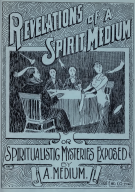 Revelations of a Spirit Medium by Elijah Farrington – Published anonymously in 1891, this volume predates David Abbott’s involvement in spiritualism (at least that I know of) and certainly predates Houdini’s crusade against fraudulent mediums. It’s an utterly scathing indictment of the spiritualist movement in the late 1800s. Farrington tells of how he was frankly recruited to become a “medium” and how lucrative the job was. Revelations exposes a multitude of tricks used in cabinet mediumship and is doubly interesting because the exposures are written by someone who had to rely on the techniques. (Available Online, My Review)
Revelations of a Spirit Medium by Elijah Farrington – Published anonymously in 1891, this volume predates David Abbott’s involvement in spiritualism (at least that I know of) and certainly predates Houdini’s crusade against fraudulent mediums. It’s an utterly scathing indictment of the spiritualist movement in the late 1800s. Farrington tells of how he was frankly recruited to become a “medium” and how lucrative the job was. Revelations exposes a multitude of tricks used in cabinet mediumship and is doubly interesting because the exposures are written by someone who had to rely on the techniques. (Available Online, My Review)
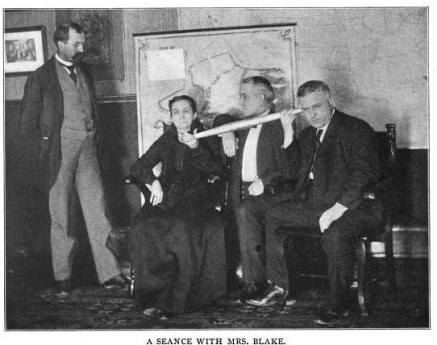 The History of a Strange Case by David P. Abbott – Abbott wrote several treatise on mediumship including Behind the Scenes with the Mediums, which is probably the most comprehensive article on spirit slate writing ever. But if I were to recommend one thing to read by David Abbott, it would be Strange Case. In it, Abbott tells of his journey from Omaha to a rural town in Ohio to investigate Mrs. Blake, a woman who could manifest voices from a trumpet or other objects. What sets this work apart for me is the attention to detail during the investigation and Abbott’s dogged open-mindedness. He isn’t willing to write off Mrs. Blake as a fraud without evidence. (Available Online)
The History of a Strange Case by David P. Abbott – Abbott wrote several treatise on mediumship including Behind the Scenes with the Mediums, which is probably the most comprehensive article on spirit slate writing ever. But if I were to recommend one thing to read by David Abbott, it would be Strange Case. In it, Abbott tells of his journey from Omaha to a rural town in Ohio to investigate Mrs. Blake, a woman who could manifest voices from a trumpet or other objects. What sets this work apart for me is the attention to detail during the investigation and Abbott’s dogged open-mindedness. He isn’t willing to write off Mrs. Blake as a fraud without evidence. (Available Online)
 Tricks of the Mind by Darren Brown – Darren Brown is probably the most famous mentalists in the world today. Tricks of the Mind offers a modern view on the practice of today’s mediums. Cabinet performances and the slate writing tests are now solidly the prevue of magicians, but the psychology that leads audiences to go along with cold reading and hypnotism stunts still remain. Brown explains a good number of the memory and suggestibility tricks he uses to produce the same effects as the Sylvia Brownes of today’s world. (My Review)
Tricks of the Mind by Darren Brown – Darren Brown is probably the most famous mentalists in the world today. Tricks of the Mind offers a modern view on the practice of today’s mediums. Cabinet performances and the slate writing tests are now solidly the prevue of magicians, but the psychology that leads audiences to go along with cold reading and hypnotism stunts still remain. Brown explains a good number of the memory and suggestibility tricks he uses to produce the same effects as the Sylvia Brownes of today’s world. (My Review)
What haven’t I read yet?
Facts, Frauds, & Phantasms: A Survey of the Spiritualist Movement by Georgess McHargue
A Magician Among the Spirits by Harry Houdini
The Spirit World Unmasked by Henry Ridgely Evans
The Wandering of a Spiritualist by Arthur Conan Doyle
Ten Years with Spiritual Mediums by Francis Gerry Fairfield
And so many more…


November 8, 2014
Deal Me In, Week 45 ~ “Natasha’s Bedroom”
Hosted by Jay @ Bibliophilopolis
“Natasha’s Bedroom” by Robyn Carr
Card picked: Queen of Hearts – The last heart of the year!
From: David Copperfield’s Beyond Imagination
Thoughts: Robyn Carr is perhaps the only non-speculative fiction writer in this anthology. She is, in fact, a writer of romances. (I’ll leave aside whether romances should be counted as speculative…) This has also been the sexiest story. Tasha is a painter and a recent widow living in Scottsdale, AZ. After months of grieving, she begins to paint a mural on the wall of her bedroom: her deceased husband standing amid a field of desert flowers. Unfortunately, the image of her husband never quite comes out right. In fact, it seems to shift and change to become a different man. Then one night, the man steps out of the mural…
Worry not. This is not one of those disturbing tales like Joyce Carol Oates’ “The Hand-Puppet.” Instead, it gives two lonely people connected by Tasha’s paintings a potentially happy future together.
Is This Your Card?


November 4, 2014
Review ~ Hangsaman
Natalie Waite, daughter of a mediocre writer and a neurotic housewife, is increasingly unsure of her place in the world. In the midst of adolescence she senses a creeping darkness in her life, which will spread among nightmarish parties, poisonous college cliques and the manipulations of the intellectual men who surround her, as her identity gradually crumbles.
Inspired by the unsolved disappearance of a female college student near Shirley Jackson’s home, Hangsaman is a story of lurking disquiet and haunting disorientation (via Goodreads)
Shirley Jackson’s The Haunting of Hill House is one of my favorite books. Period. Having reread it back in September (for the third or fourth time), it still chilled me and I still found interesting bits to chew on. That’s probably why I gave Hangsaman over 200 pages before I gave up on it.
Hangsaman was Jackson’s second novel, published eight years before Hill House. Both novels deal with paranoia concerning being a group outsider. Both novels are about the place that a young woman is expected to take in society versus her suitability for that role. Many of Jackson’s works deal with these issues and are probably reflective of her own personal concerns.* The difference is in Hill House Jackson uses the trope of the haunted house as a framework for investigating these issues. No such framework exists in Hangsaman. We are left adrift in the mind of Natalie Waite and it’s hard to find *that* to be a compelling story. Jackson does one better in her next and last novel We Have Always Lived in the Castle. It’s pretty much a full-on modern Gothic. To me, Hangsaman feels like an early foray into dealing with these issues of identity.
I’ve lately read a few comments about this book along the lines of “lots going on/hard to unpack/I think I’m missing something” and I think that’s because there is no roadmap for experiencing Hangsaman. Some readers might like that; I like it better when form can help clarify the message.
* The missing student is revisited in several of her short stories as well. Personally, I can understand Jackson’s fascination with that story. As a woman, wouldn’t it be nice to leave all expectations behind? But without society’s expectations, do women simply disappear?
My Edition: 1951, Farrar, Straus and Young, hardback
Why did I choose to read this book? Enjoyed other works by author; Book Smugglers readalong


November 3, 2014
My Year in Non-Fiction (Thus Far)
Week 1: (Nov. 3 to 7) Hosted by Kim @ Sophisticated Dorkiness – Your Year in Nonfiction: Take a look back at your year of nonfiction and reflect on the following questions – What was your favorite nonfiction read of the year? What nonfiction book have you recommended the most? What is one topic or type of nonfiction you haven’t read enough of yet? What are you hoping to get out of participating in Nonfiction November?
My favorite nonfiction read thus far this year has been Tesla: Inventor of the Electrical Age by W. Bernard Carlson. Carlson focuses in on Tesla’s early years, attempting to give his thought processes, successes, and failures context. It’s a nice demystification of a remarkable man. When recommending this book, I always feel the need to preface it with, “There *is* a bit of electrical engineering. Just go with it. You’ll be alright.”
On the other side of the recommendation coin, there is Is Everyone Hanging Out Without Me? by Mindy Kaling. Kaling is funny and surprisingly down to earth in an almost old fashioned way. No electrical engineering in this one, but more discussion of fashion than I usually tolerate. ;)


Opposite ends of a spectrum?
I haven’t read as many nonfiction books this year as I intended. I have a whole shelf of research books that haven’t gotten nearly enough love. I am always looking to expand my knowledge of stage magic and Mid-Western/Heartland history. I’d also like to read more about WWI and events leading up to WWI.
As for Nonfiction November? I hope visit more bloggers who enjoy nonfiction. Nonfiction often has a black-sheep reputation that I just don’t understand. Learning about the world is a great thing!



